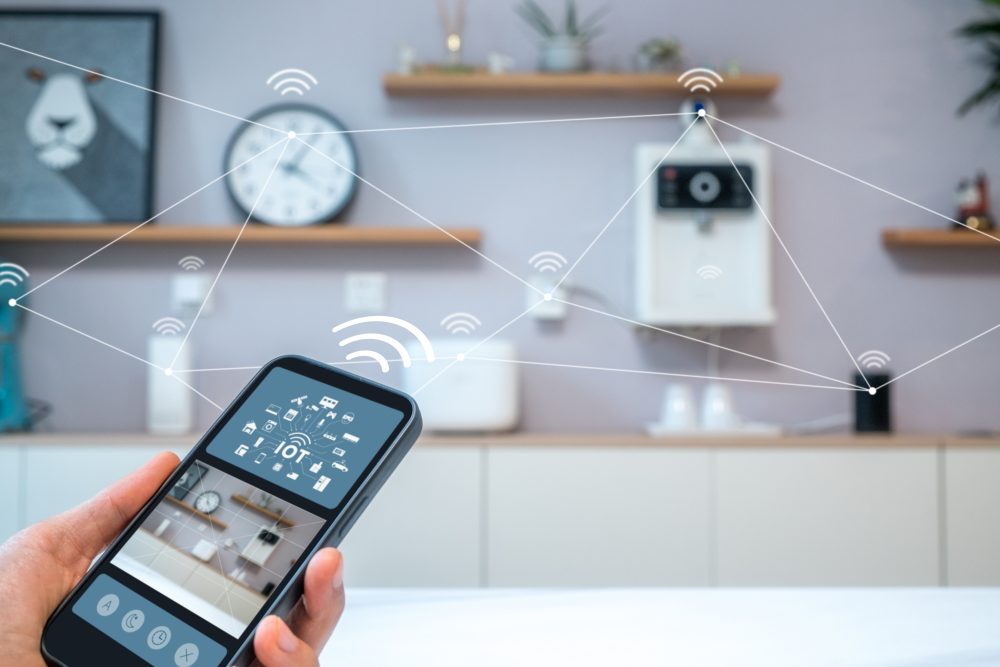According to a recent whitepaper by Parks Associates, “72 percent of smart home product owners are concerned with the security of personal data collected by their devices.” This concern is especially pertinent as smart homes begin to explode in popularity with the everyday consumer. According to a report published by Oberelo, there are over 50 million smart homes worldwide as of 2022. Experts project another 10.2 percent of growth in the market by 2024.
Smart products in the home are connected to the internet, making them intrinsically vulnerable to hacking. According to CBS, smart homes can experience up to 12,000 hacking attempts in a week. Additionally, CBS tells us that some hackers will find the weakest device and use it as an entry point to other devices such as baby monitors, refrigerators, thermostats, etc. This is a scary phenomenon; however, there are ways for retailers and consumers to protect their networks.
Are smart devices secure?
There is no definite answer to whether smart devices are “safe.” Safety largely depends on software implemented by the manufacturer and strategies used by hackers. However, some products are deemed more secure than others, and smart device experts have tested them.
In an attempt to see how smart homes are susceptible to hackers, NCC Group, the Global Cyber Alliance (GCA), and the company “Which?” outfitted a home with smart devices and monitored the attempted hacking over time. Cybernews reports that over a week, there were over 10,000 hacking attempts. While some devices easily averted the hacks, others did not fare well. Most devices successfully deterred the attacks except for an unidentified camera sold by a third-party retailer on Amazon, which allowed hackers a window into the home. The product was immediately reported to the manufacturer and removed from circulation.
How can consumers protect themselves from cyber-attacks?
There are a variety of ways consumers can protect their smart home from bad actors, especially if the home is controlled from a central device. Cybernews advises consumers to use a VPN, ensure the Wi-Fi password is unique, have two-step verification, and use a separate guest Wi-Fi network.
How can CE Retailers protect their consumers?
There are plenty of resources for consumers to read about how they can protect their network and devices, but the onus is also on retailers to make sure they are connecting customers with reliable and safe products.
Currently, there are a variety of independent webpages that can be accessed online, which claim to properly asses the security risk of consumer products. Moreover, while the U.S. Securities and Exchange Commission (SEC) passed legislation in March of 2022 to mandate the reporting of cybersecurity incidents among major corporations, no steps have been taken -as of yet- to safeguard connected home products.
However, there are already systems in place in other parts of the globe that we can look towards as models. The Finnish Transport and Communications Agency has developed a cybersecurity certification program that allows CE Retailers and consumers to determine if a product is “cybersecurity certified.” Implementing such a program in the U.S. would be a great step in the right direction and allow CE retailers a more efficient way to determine if a product is safe to sell.
It is the job of CE retailers to make sure they are working with manufacturers that prioritize security. Unfortunately, not all products are created equal when it comes to handling cyber threats. U.S. Cybersecurity and Infrastructure Security Agency highlighted that most cybersecurity issues come from “internet-linked appliances designed without much attention to security [and] sloppy programming by developers.” If manufacturers do not take the time to fix those flaws, un-secure products enter the market.
Knowing this, CE Retailers should ensure that the products they sell have been tested properly. Ideally, this would be before the product hits the shelves. However, if products fail security tests like the one previously mentioned, companies are responsible for removing faulty items. Amazon, for example, took the vulnerable camera off the market once they found it was not secure. This process should be standard procedure.
Final Thoughts
Smart products are an integral part of most homes, and hacking attempts are becoming more advanced. CE retailers have the means to protect consumers by choosing products that pass safety checks, and consumers can protect their homes by taking steps to ensure they are using password-protected and strong products.















